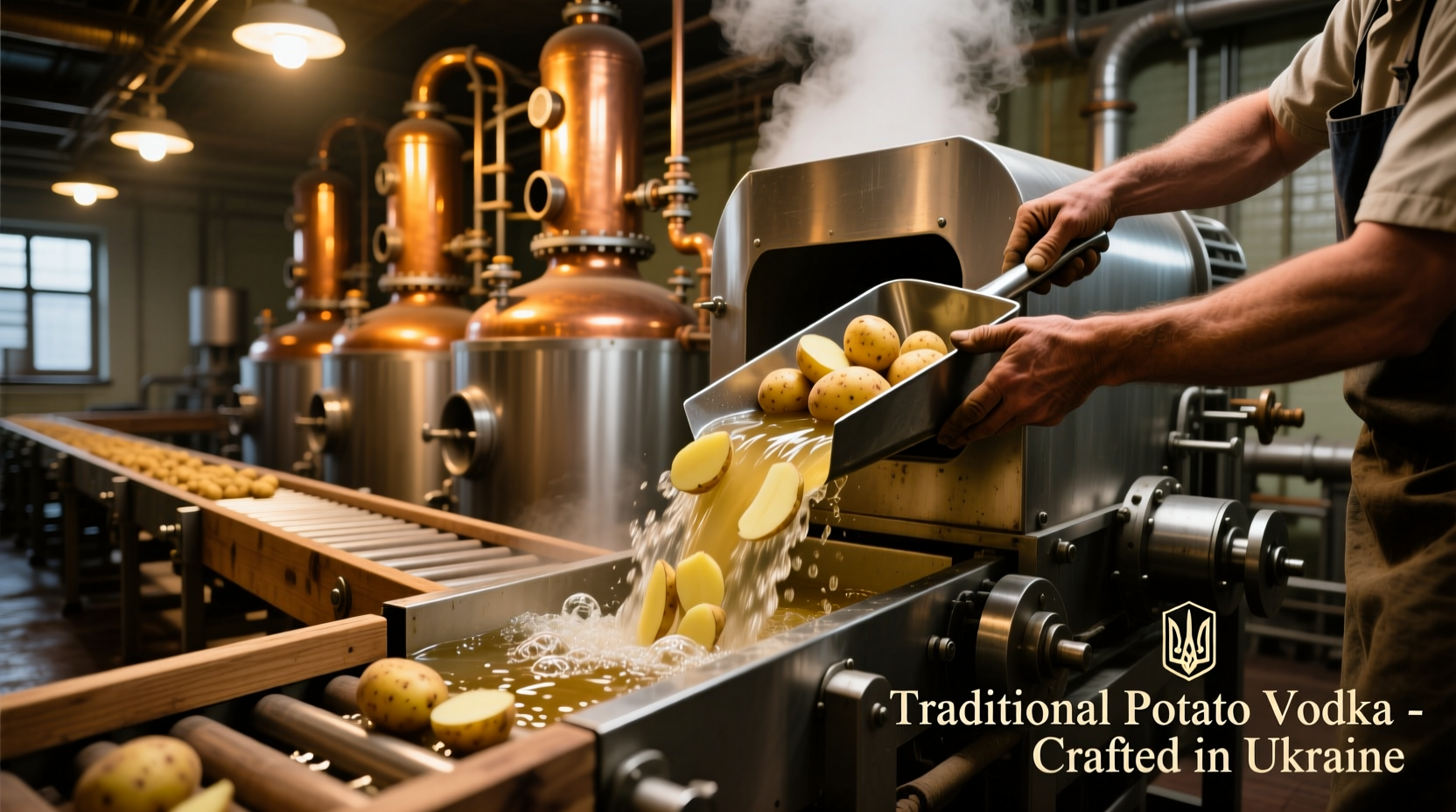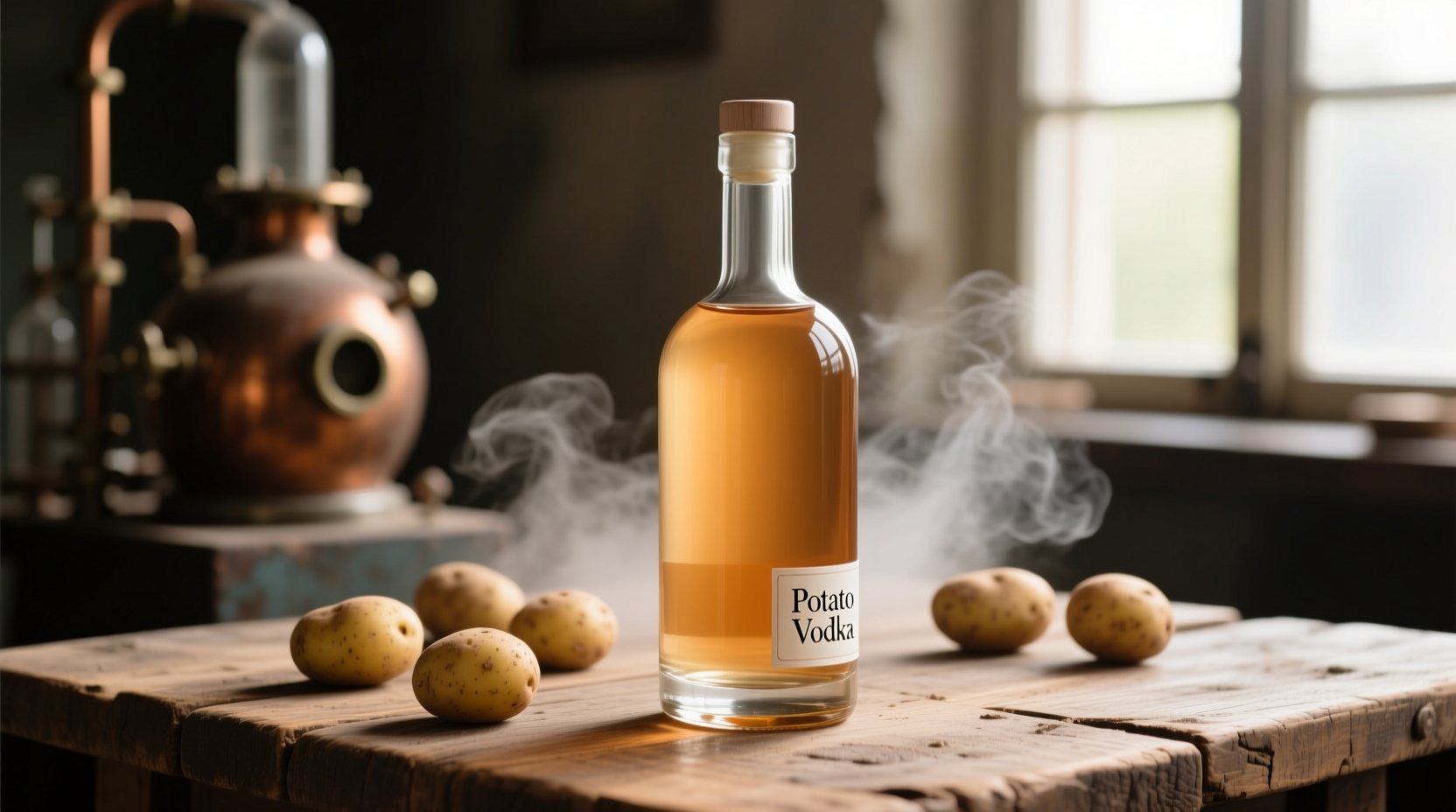Potato vodka is a premium spirit distilled from potatoes rather than grains, offering a distinctive creamy texture and earthy flavor profile that sets it apart from traditional grain-based vodkas. This unique production method creates a spirit with subtle sweetness, smooth finish, and complex mouthfeel highly valued by connoisseurs.
For vodka enthusiasts seeking an authentic experience, understanding potato vodka's characteristics is essential. Unlike its grain-based counterparts, potato vodka delivers a richer sensory experience with distinctive earthy notes and velvety texture that shines both neat and in carefully crafted cocktails. This comprehensive guide explores what makes potato vodka special, its historical significance, production process, and practical applications for discerning drinkers.
What Exactly Makes Potato Vodka Different?
At its core, potato vodka represents a traditional approach to spirit production that dates back centuries in Eastern Europe. The fundamental difference lies in the base ingredient: while most commercial vodkas use grains like wheat, rye, or corn, potato vodka utilizes potatoes as its primary fermentation source. This seemingly simple substitution creates profound differences in flavor, texture, and production complexity.
Distillers choose potatoes for vodka production because they contain complex starches that convert to sugars differently than grains. This results in a spirit with distinctive characteristics:
| Characteristic | Potato Vodka | Grain Vodka |
|---|---|---|
| Texture | Creamy, velvety mouthfeel | Lighter, crisper texture |
| Flavor Profile | Earthy notes with subtle sweetness | Cleaner, more neutral profile |
| Production Complexity | More challenging fermentation process | Simpler, more consistent production |
| Yield | Lower alcohol yield per batch | Higher alcohol yield per batch |
This comparison reveals why potato vodka typically commands higher prices and occupies a premium position in the spirits market. The production process requires more potatoes per bottle and demands greater expertise from distillers to achieve consistent quality.
Historical Roots of Potato Vodka Production
Potato vodka's history is deeply intertwined with the agricultural practices of Eastern Europe. While grain-based vodkas have ancient origins, potato vodka emerged later as a practical solution when grain supplies were scarce. The timeline below illustrates key developments:
- Early 18th Century: Potatoes introduced to Eastern Europe from the Americas
- Late 18th Century: First documented potato-based spirits in Poland and Russia
- 19th Century: Widespread adoption during grain shortages and famines
- Early 20th Century: Recognition as a premium product in Scandinavian countries
- Late 20th Century: Revival of artisanal potato vodka production
- 21st Century: Global appreciation for craft potato vodkas
According to historical records from the European Parliament's research service, potato-based spirits became particularly important in regions with poor soil conditions unsuitable for grain cultivation but favorable for potatoes. This practical adaptation eventually evolved into a distinctive tradition valued for its unique sensory qualities rather than mere necessity.

The Complex Production Process
Creating quality potato vodka presents unique challenges that explain its premium status. The process begins with selecting specific potato varieties known for their starch content and flavor characteristics. Unlike grains, potatoes require additional processing steps before fermentation can begin:
- Selection: Distillers choose starchy varieties like Yukon Gold or Russet
- Preparation: Potatoes are washed, peeled, and cooked to break down cell structure
- Saccharification: Enzymes convert potato starches to fermentable sugars
- Fermentation: Yeast converts sugars to alcohol over several days
- Distillation: Multiple distillation passes to achieve desired purity
- Filtering: Often through charcoal or other natural materials
- Blending and Bottling: Dilution to appropriate proof and final quality check
The critical difference occurs during saccharification. Grain starches convert more readily to sugars, while potatoes require additional enzymatic processing. This complexity contributes to potato vodka's distinctive flavor compounds that survive distillation. Research published in the Journal of Food Composition and Analysis confirms that potato-based spirits contain unique glycerol and fatty acid profiles that contribute to their characteristic mouthfeel.
Tasting Potato Vodka: What to Look For
Experiencing potato vodka properly requires attention to specific sensory characteristics. When evaluating quality potato vodka, focus on these elements:
- Appearance: Should be crystal clear with no cloudiness
- Aroma: Subtle earthy notes with possible hints of fresh potato or cream
- Mouthfeel: Distinctive creamy texture that coats the palate
- Flavor: Smooth with gentle sweetness and minimal alcohol burn
- Finish: Clean but lingering with subtle earthy notes
For optimal tasting, serve potato vodka chilled but not ice-cold, as extreme cold numbs the palate. The ideal temperature range of 8-12°C (46-54°F) allows the spirit's complex characteristics to shine through. Unlike grain vodkas that often aim for complete neutrality, quality potato vodka should express its distinctive character while maintaining smoothness.
Practical Applications for Potato Vodka
Understanding how to use potato vodka enhances your appreciation of its unique qualities. Consider these applications:
Enjoying Neat or Chilled
Potato vodka's rich texture makes it particularly enjoyable when served chilled. The traditional Eastern European method involves serving small portions (1-2 ounces) very cold, allowing the spirit to gradually warm in the glass. This approach reveals subtle flavor nuances as the temperature changes.
Cocktail Considerations
While potato vodka works in most vodka cocktails, its distinctive character shines in specific applications:
- Vodka Martini: Enhances the cocktail's texture and provides subtle complexity
- Bloody Mary: Complements tomato flavors with its earthy notes
- Simple Highballs: Works beautifully with premium tonic or soda
Avoid using potato vodka in cocktails with strong competing flavors that would mask its distinctive characteristics. The spirit's premium quality deserves recipes that allow its unique profile to contribute meaningfully to the final drink.
Culinary Uses
Chefs increasingly recognize potato vodka's value in cooking. Its smooth profile makes it ideal for:
- Flambéing delicate dishes without harsh alcohol notes
- Creating smooth sauces and reductions
- Extracting flavors in infusions
- Pastry applications where neutral flavor is desired
Common Misconceptions About Potato Vodka
Several myths persist about potato vodka that deserve clarification:
- "Potato vodka tastes like potatoes" - Quality potato vodka should not have strong potato flavor; the distillation process removes raw potato characteristics while preserving desirable textural elements
- "All vodkas taste the same" - Sensory analysis confirms distinct differences between base ingredients, with potato vodkas showing measurable differences in mouthfeel and flavor compounds
- "Potato vodka is always better than grain vodka" - Quality depends more on production methods and distiller expertise than base ingredient alone
- "Potato vodka has more calories" - All distilled spirits of the same proof contain identical calories per serving, regardless of base ingredient
Understanding these distinctions helps consumers make informed choices based on personal preference rather than marketing claims. The choice between potato and grain vodka ultimately depends on what sensory experience you seek in your spirit.
When Potato Vodka Shines: Contextual Considerations
While personal preference plays a significant role, certain contexts particularly benefit from potato vodka's distinctive characteristics:
- Cold weather consumption: The creamy texture provides comforting warmth
- After-dinner servings: Its smooth finish makes it ideal as a digestif
- Food pairing with rich dishes: Complements creamy sauces and fatty meats
- Sipping occasions: When you want to appreciate the spirit itself rather than just its alcoholic content
Conversely, potato vodka may not be the optimal choice when complete neutrality is desired, such as in certain mixed drinks where the vodka should serve merely as alcohol delivery without contributing flavor. Understanding these contextual boundaries helps maximize enjoyment of this distinctive spirit.











 浙公网安备
33010002000092号
浙公网安备
33010002000092号 浙B2-20120091-4
浙B2-20120091-4